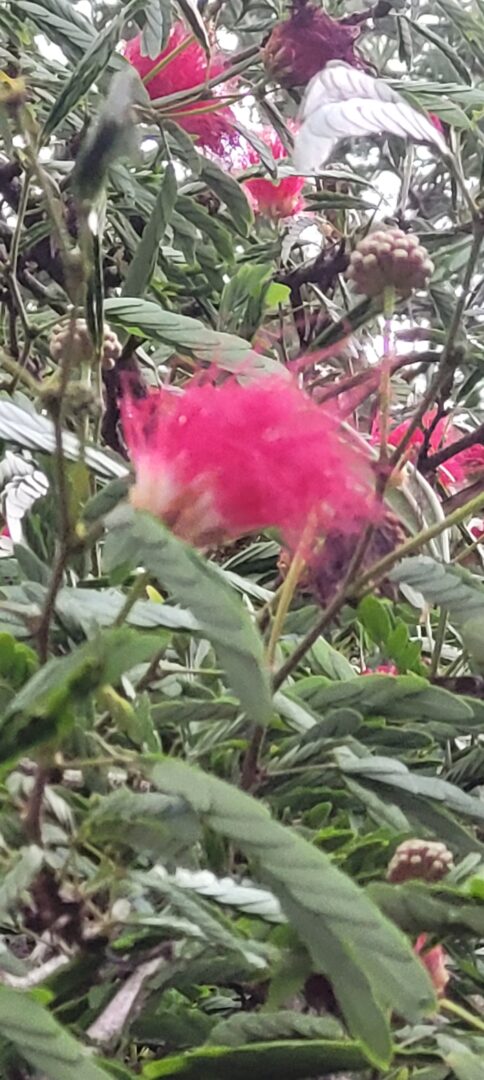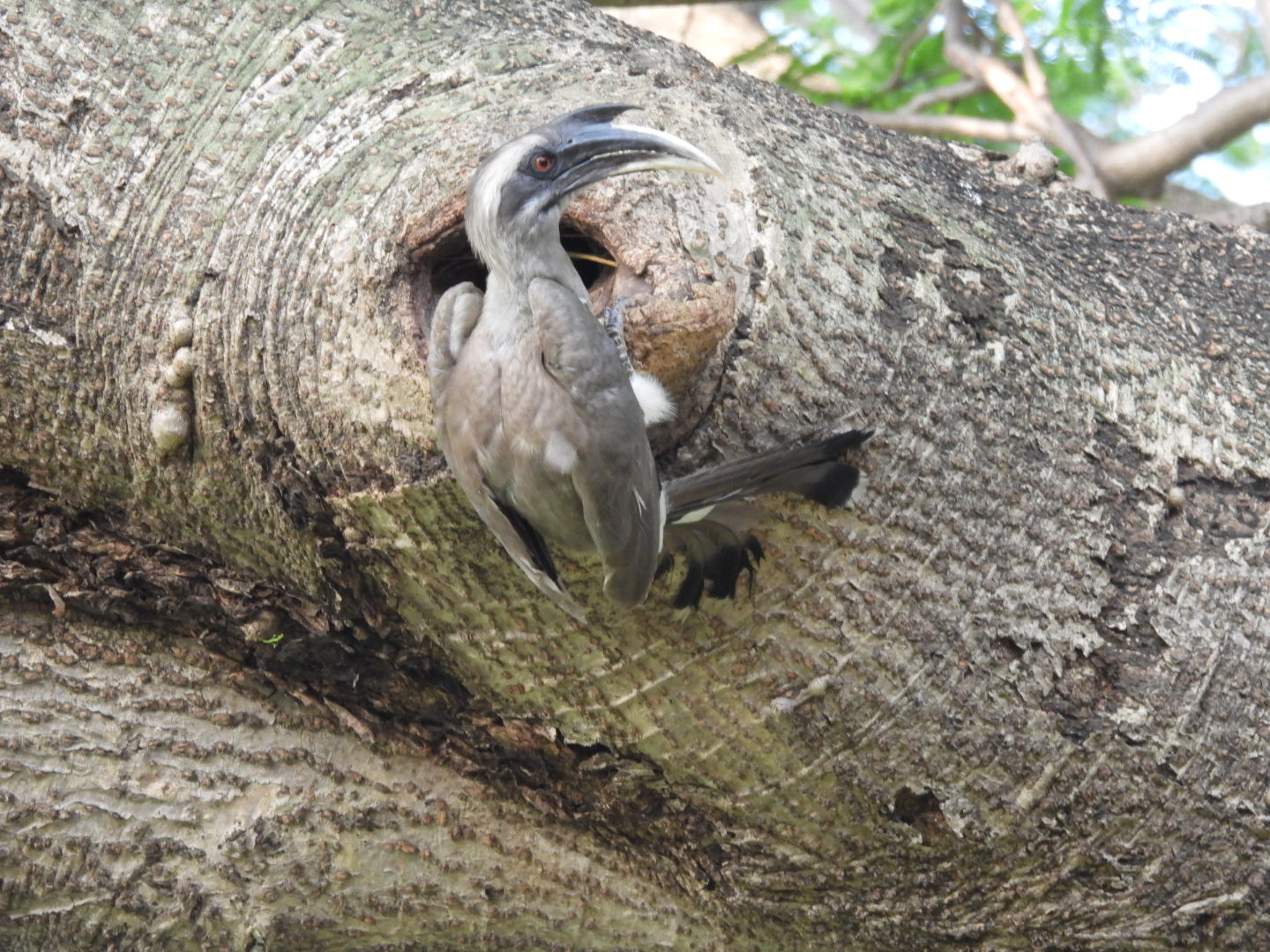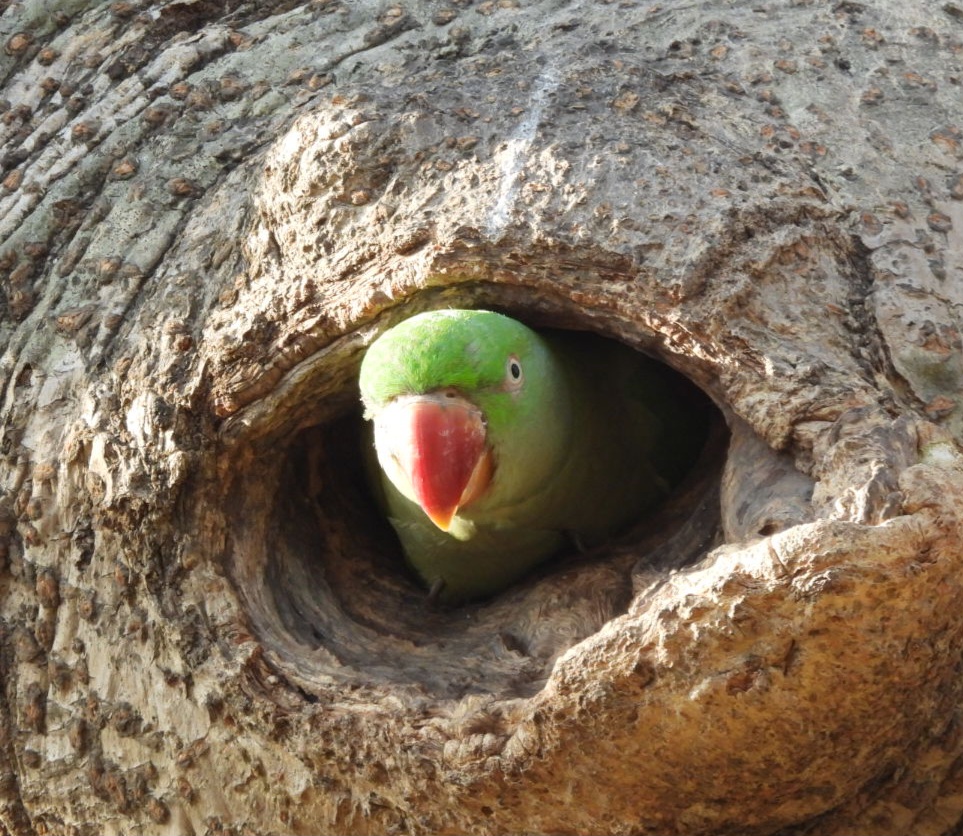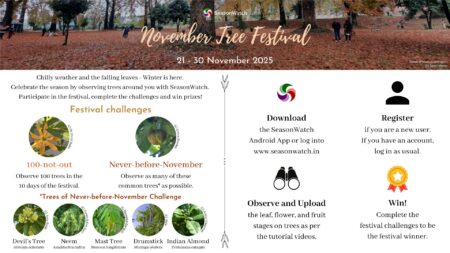If you ever happen to visit Kamla Nehru Park at Malabar Hill in the heart of Mumbai City, then do take in the magic of the scores of lush trees that bade you to marvel at their vibrant splendour. Each is unique in its characteristic personalities. But two trees that usually have a pull over me, including the birds, are the Rain tree/Monkey pod tree and its neighbouring tree, the Powderpuff tree.
If you are a mere passerby or a dendrophile, then the Rain Tree/Monkeypod tree (Samanea Saman) is a mammoth canopy-rich umbrella-shaped tree, some 60 to 80 ft. tall protection to scores of creatures. The tree is mesmerisingly gigantic with its thick woody trunk, green feather-shaped leaves that curl up during the rains, and white fragrant flowers when in season. If you are ever in need of shade from the harsh sun, then the Rain tree it is! It sheds its leaves from December to February, but will flourish soon during the Monsoon. It is an urban park and a roadside tree.
The neighbouring tree that is closest to it is the Powderpuff (Calliandra haematocephala) flowering tree. It is usually resplendent with abundant pink and white flowers, which look like pom-poms and a cluster of sticky pod seeds that monkeys, birds, buzzing bees, and fluttering butterflies love to drink nectar from and is rich in medicinal uses. The flowers bloom in Spring and Summer, swaying in happiness to the welcoming breeze

The Powderpuff tree (Calliandra haematocephala)
Having been a regular visitor to the Hanging Garden and Kamla Nehru Park at Malabar Hill since my childhood, I have been treated to a myriad of creatures, flora, and fauna of both these spaces.
The Kamla Nehru Park is a rich, robust ecosystem, even with its distinctive changing Indian seasons. Each nook and corner calls out to you as if wanting to narrate their story, making you a part of their journey.
This past year, I have visited the Kamla Nehru Park more often, having taken up serious bird watching, and for me, there is a special joy in being around trees. Early mornings are the best time for capturing the avian and nature’s bounty.
Amusing and lively antics that I observe on and off are of the resident Indian Grey Hornbills. Around six of them (adults and juveniles) fly around the park, more so on the thick branches of the Rain tree. Screeching out loud ‘kek-kek-kek’ or ‘kieeeu’, they converse. I think their favourite gag is to tease a pair of male and female Rose-ringed Parakeets that sit on the branches of the Powder puff tree happily munching on its pink flowers and pods. This is the Parakeet’s favoured meal. Or if not that, then both species of birds vie for a space in the empty cavity of the Rain tree to build their nest. Or then the bird (Indian Grey Hornbill or Rose-ringed Parakeet) who has lucked out will, from another tree, keep a lookout to see if that same cavity spot is open for the taking (despite there being many more cavities on the huge tree). How comic and witty their behaviour! Almost humanlike.

Indian Grey Hornbill (Ocyceros birostris)

Rose-ringed Parakeet in the cavity of Rain tree e (Psittacula krameria)
The next time you visit a garden or park in your vicinity, do look up at the trees or down at the ground with eyes wide open. There is so much to observe and experience. What you may see today or after a few days may not be there in the next season that follows.
All photos by Poyani Mehta.
About the author: Poyani Mehta, a former school librarian, is a homemaker and freelance storyteller. She loves all creatures big and small and cares for 6 community cats and a community dog, Shanti. She is a birder and rescues injured birds. She is a photographer and loves being in nature among the green and avian.







how lovely to know about all this